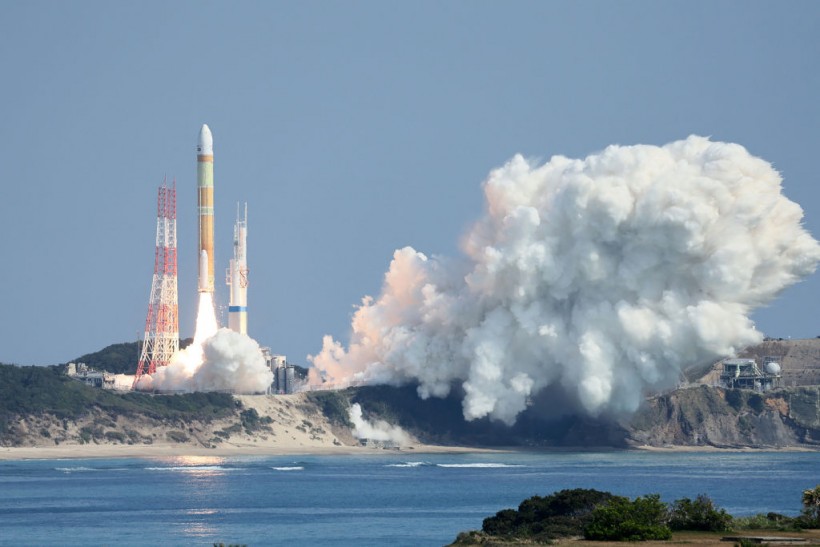
(Photo : JIJI Press / AFP) / Japan OUT (STR/JIJI Press/AFP via Getty Images)
Japan's moon mission was delayed after authorities decided to suspend the launch of an x-ray telescope as well as an experimental moon lander due to inclement weather.
Japan canceled the launch of its X-ray telescope and experimental moon lander due to powerful winds in the upper atmosphere.
The Asian nation's moon mission was planned to begin on Aug. 28 with the launch of an H-IIA rocket that would have carried the experimental moon lander into space. Mitsubishi Heavy Industries (MHI) launch services unit announced the delay in a social media post on X, formerly known as Twitter, 24 minutes before the scheduled launch.
Japan's Moon Mission Suspended
The rocket was set to be launched from Japan Aerospace Exploration Agency (JAXA)'s Tanegashima Space Center in southern Japan at 9:26 a.m. local time on Monday. Jaxa said that MHI would provide further details regarding the situation in the future.
The mission involves JAXA's lunar landing spacecraft known as Smart Lander for Investigating Moon (SLIM) and an X-ray imaging satellite, as per Rappler. The rocket's launch has already been rescheduled twice due to inclement weather.
The X-ray telescope is known as the X-ray Imaging and Spectroscopy Mission (XRISM) and is a joint mission between JAXA and NASA. There is also participation from the European and Canadian Space Agency.
On the other hand, SLIM is a small-scale exploration lander designed to demonstrate a "pinpoint" landing at a specific location within 100 meters rather than the usual kilometer range. The lander relies on high-precision landing technology, leading to the mission's nickname, Moon Sniper.
The satellite, alongside its two instruments, will observe the universe's hottest regions, largest structures, and objects with the strongest gravity. XRISM can detect X-ray light, a wavelength that is invisible to the human eye.
Astronomers look forward to studying X-rays because they are released by some of the most energetic objects and events in the universe. In a statement, XRISM principal investigator at NASA's Goddard Space Flight Center in Greenbelt, Maryland, Richard Kelley, said that some of the things they want to study include the aftermath of stellar explosions, according to CNN.
Read Also: Chandrayaan-3 Captures Stunning Images of Luna Surface Ahead of Historic Moon Landing
Studying X-Ray Light
They are also looking to observe near-light-speed particular jets launched by supermassive black holes located in the centers of galaxies. He added that they are most excited to learn more about the unexpected phenomena that XRISM will discover while observing the cosmos.
X-rays, compared to other wavelengths of light, are so short that they pass through the dish-shaped mirrors meant to observe and collect visible, infrared, and ultraviolet light, such as the James Webb and Hubble space telescopes.
XRISM is equipped with a key tool known as Resolve, which is an instrument that will be responsible for collecting spectroscopic data with much higher resolution than X-ray observatories that orbit Earth are capable of getting.
However, for Resolve to measure tiny changes in temperature when X-rays hit its surface, the instrument has to be cooled to just a fraction above absolute zero, said the New York Times.
Related Article: Voyager 1's Gold Vinyl for Aliens: Experts Say Music Disks Could Outlive Humans








